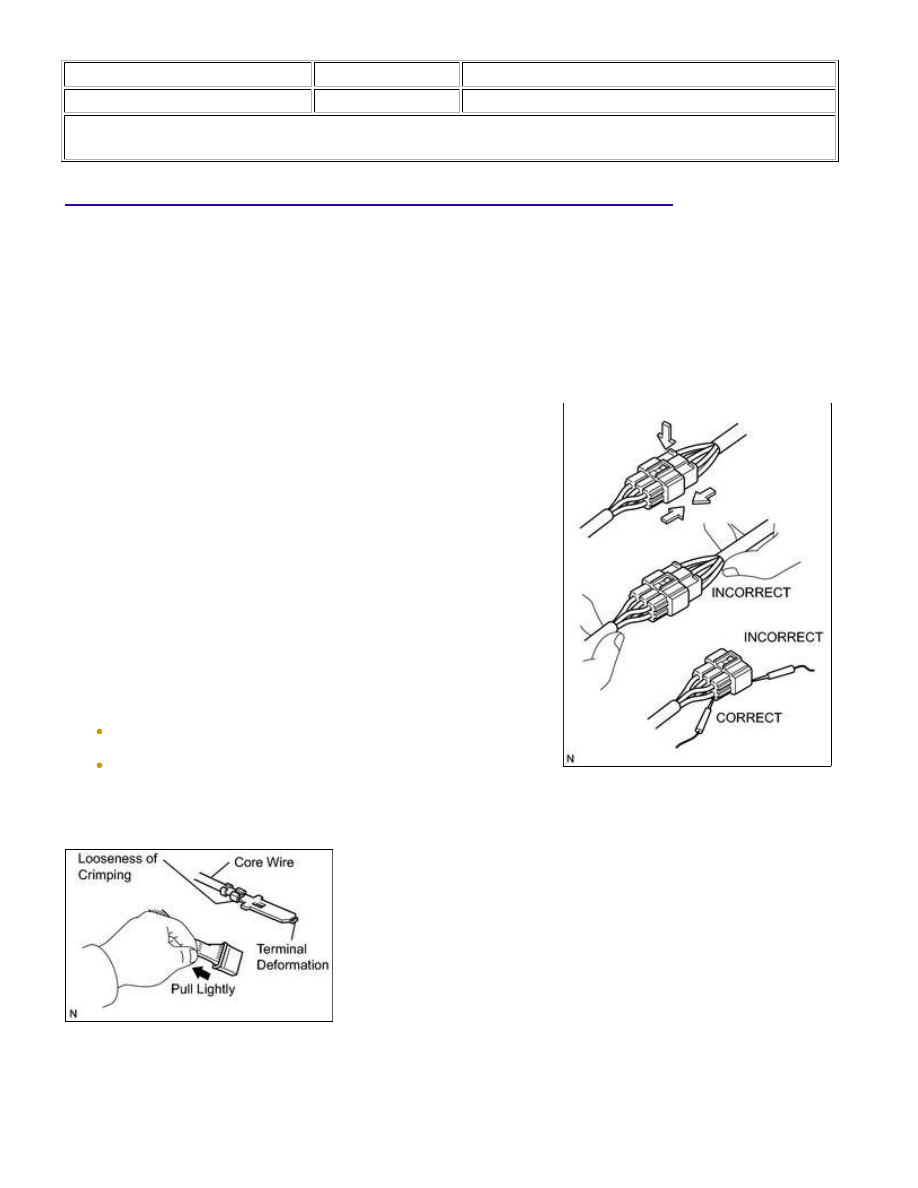Toyota Tundra (2015 year). Manual - part 5

Last Modified: 9-16-2014
6.6 F
Doc ID: RM000000UZ30F6X
Model Year: 2015
Model: Tundra
Prod Date Range: [08/2014 - ]
ELECTRONIC CIRCUIT INSPECTION PROCEDURE
1. BASIC INSPECTION
(a) WHEN MEASURING RESISTANCE OF ELECTRONIC PARTS
(1) Unless otherwise stated, all resistance measurements should be made at an ambient temperature of
20°C (68°F). Resistance measurements may be inaccurate if measured at high temperatures, i.e.
immediately after the vehicle has been running. Measurements should be made after the engine has
cooled down.
(b) HANDLING CONNECTORS
(1) When disconnecting a connector, first squeeze the mating
halves tightly together to release the lock, and then press
the lock claw and separate the connector.
(2) When disconnecting a connector, do not pull on the
harnesses. Grasp the connector directly and separate it.
(3) Before connecting a connector, check that there are no
deformed, damaged, loose or missing terminals.
(4) When connecting a connector, press firmly until it locks with
a "click" sound.
(5) If checking a connector with a TOYOTA electrical tester,
check the connector from the backside (harness side) using a
mini test lead.
NOTICE:
(1) Checking when a connector is connected: Squeeze the connectors together to confirm that they are
fully connected and locked.
(2) Checking when a connector is disconnected: Check by pulling the wire harness lightly from the